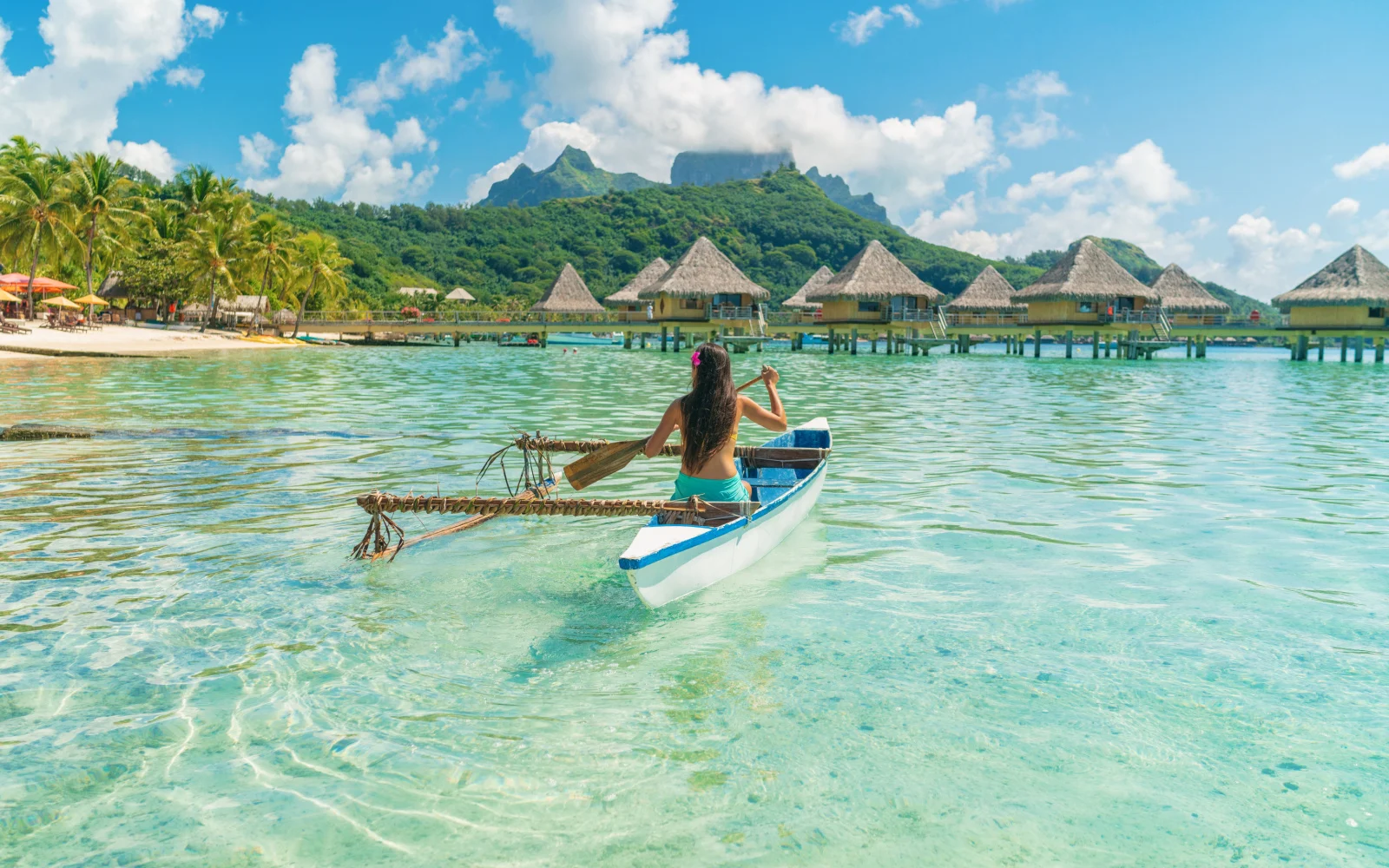What's the best time to visit French Polynesia?
The best time to visit French Polynesia is from June to August during the winter dry season, with warm temperatures ranging from 71-80 degrees Fahrenheit. This period is ideal for beach lounging, snorkeling, diving, and hiking, alongside experiencing cultural events like Heiva I Tahiti. However, it’s also the busiest and most expensive time of year to visit, so be sure to book your flight and hotel early.
French Polynesia, with its beautiful islands including Tahiti and Bora Bora, is a bucket list item for any lovers of great beach destinations.
If you love sandy beaches, snorkeling coral reefs, and other tropical activities, then making the trek will absolutely be worth it. Take some time to get to know Polynesian culture by visiting ancient temples, visiting local villages, and enjoying delicious fresh food.
French Polynesia is truly a paradise on Earth, especially if you visit when the archipelago is at its best. We’ll show you the best, least busy, cheapest, and worst times to visit below; let us be your guide!
Overall Best Time to Visit French Polynesia
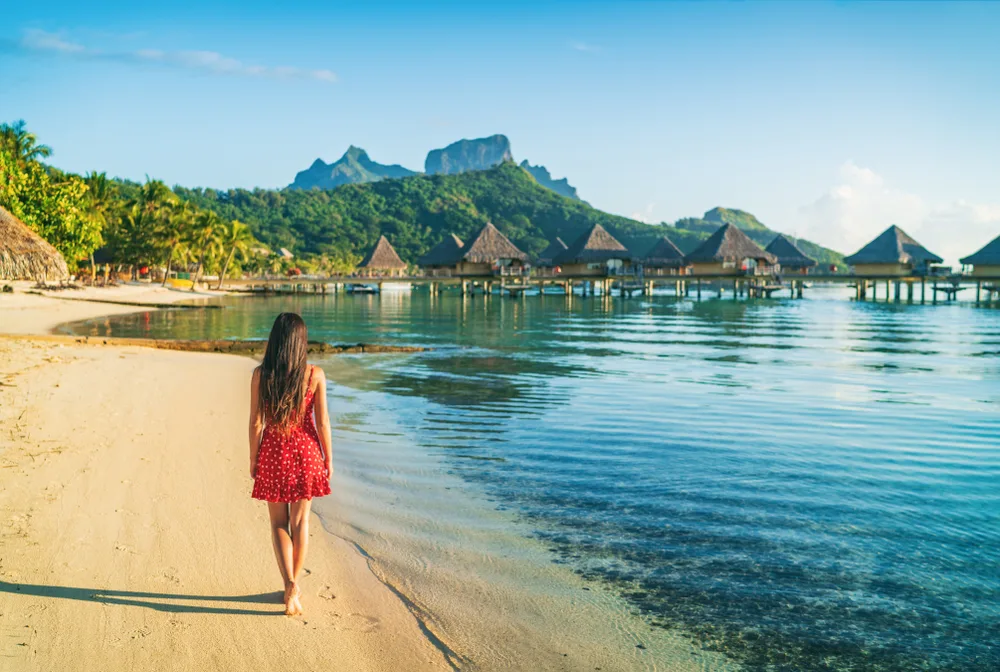
Maridav/Shutterstock
The best time to visit French Polynesia is from June to August, which is the peak of the winter dry season in the archipelago.
Although May to October marks French Polynesia’s “winter,” keep in mind that this is a tropical archipelago and temperatures are consistently warm all year round (with a few exceptions).
Even during the cooler parts of the year, expect temperatures to be between 71-80 degrees Fahrenheit (21-27 degrees Celsius) according to the official French Polynesian tourist board.
May to October is French Polynesia’s dry season. The months of June to August are the peak of the dry season, meaning that you have the least chance of getting caught in the rain. This is perfect weather for lounging on the beach and working on your tan.
The dry season is the perfect season for other water-based activities such as snorkeling and diving. According to the official PADI site instructing divers worldwide, June-August is one of the best periods to dive with sharks and rays.
In August, humpback whales also migrate to the islands. While you may be more familiar with French Polynesia’s water-based activities, the landscape is also stunning.
The islands have stunning mountains and rugged cliffs, perfect for hiking if you want a more adventurous break from your time on the beach.
Hiking on scenic islands such as Fatu Hiva is best during the dry season since the trails aren’t muddy and there is less chance of rain, so views will be clearer once you reach the top. Visiting in the middle of Polynesian dry season is also the best time to experience some traditional festivals.
The Heiva I Tahiti, which happens between June-August, is a massive celebration of Tahitian dance, music, or culture. Dozens of troupes from across the archipelago come together to compete and show off their skills.
Since French Polynesia is part of France, it also celebrates French holidays such as Bastille Day (July 14th). Expect many businesses to be closed during the summer French holidays and resorts to be full as locals head to the outer islands for some fun in the sun.
In fact, the only downside of visiting from June to August is that this is the busiest time of the year in, so resorts will be crowded (and expensive).
Cheapest Time to Visit French Polynesia
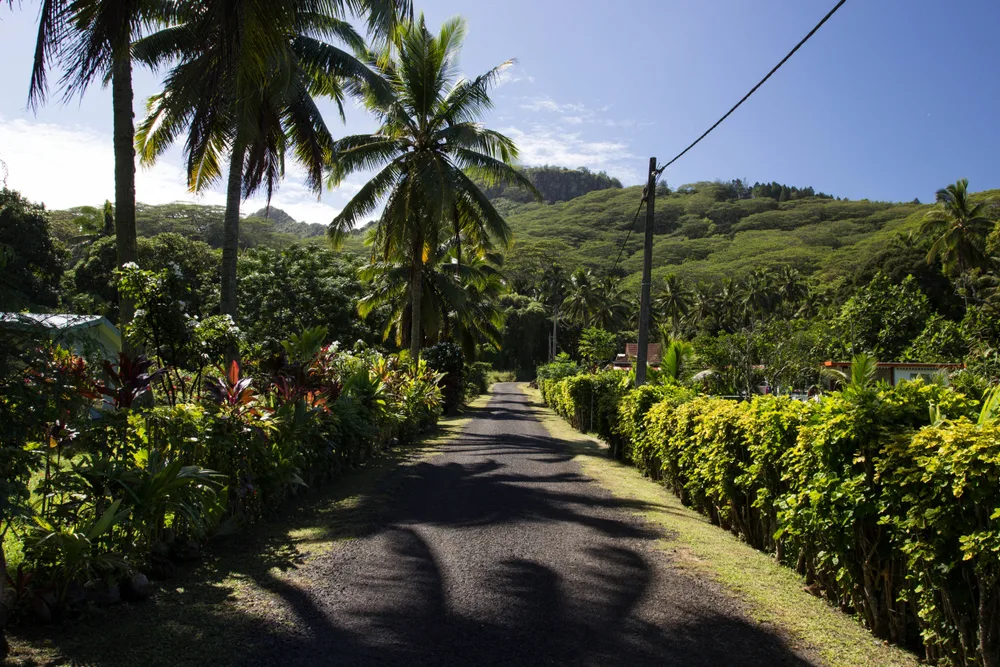
Rach V/Shutterstock
The cheapest time to visit French Polynesia is during the beginning or end of the rainy season (November or February-March). The rainy season, except for the period around Christmas, tends to see fewer visitors.
As a result, hotel prices are somewhat lower. In the later part of the rainy season, you can save $30-$50 per night on the price of a hotel room compared to peak season prices.
This is also one of the least expensive times to get to French Polynesia. The best way to get there from most of the planet is to fly to Tahiti and then island-hop. Flights usually cost the least from September to February, with a slight increase around Christmas.
Flights from April to May are a bit more expensive, but still below peak season prices. During this season, from November to March, temperatures tend to be hotter, reaching up to 95 degrees Fahrenheit.
Conditions are usually cooler to the south, on the Austral and Gambier Islands, which are affected by Antarctic winds. The good news is that even during the height of the rainy season, the weather isn’t too bad in French Polynesia.
The islands mostly get sporadic daily showers that serve as a welcoming way to cool off. Compared to other tropical destinations, the chances of cyclones and other strong storms are relatively low.
Just keep in mind that although you may save some money by visiting during the off-season, French Polynesia is hardly a budget destination. Since it is so remote, the cost of flights, hotels, and basic expenses are high year-round.
Least Busy Time to Visit French Polynesia
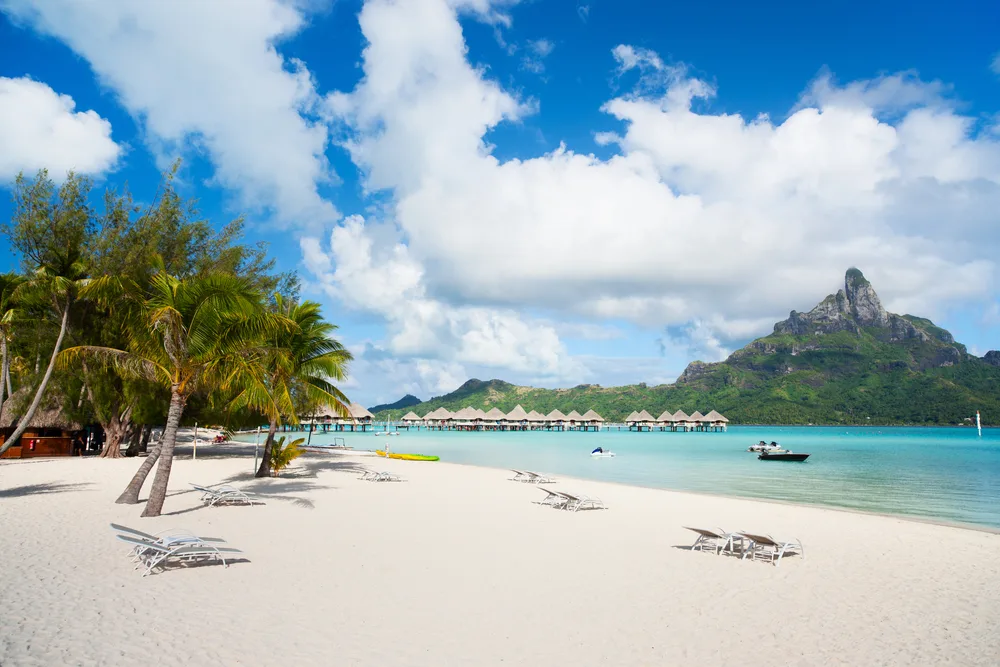
BlueOrange Studio/Shutterstock
The least busy time to visit French Polynesia is during the transitional periods between the wet and dry seasons. These are April-May and September-October.
The transitional periods still see some more crowds than in the dead of the dry season, but you can also enjoy decent weather. It isn’t as hot or humid as it gets during the rainy season, but temperatures tend to be warmer than in July or August.
September and October have great beach weather, and you can enjoy beautiful snorkeling and diving opportunities. August to October is the peak whale-watching season around French Polynesia.
During these months, humpback whales calve off the coast of Moorea. There is a slight increase in travelers in October due to French school holidays, but not as many as during peak season.
In October, you can also catch the Hawaiki Nui Va’a, a traditional race of outrigger canoes. This is a great event to attend and experience traditional Polynesian culture.
April to May also has warmer weather with lower humidity and much fewer crowds. Since these months mark the end of the rainy season, the landscape on the islands is lush and green, perfect for hiking and enjoying fruit.
Worst Time to Visit French Polynesia
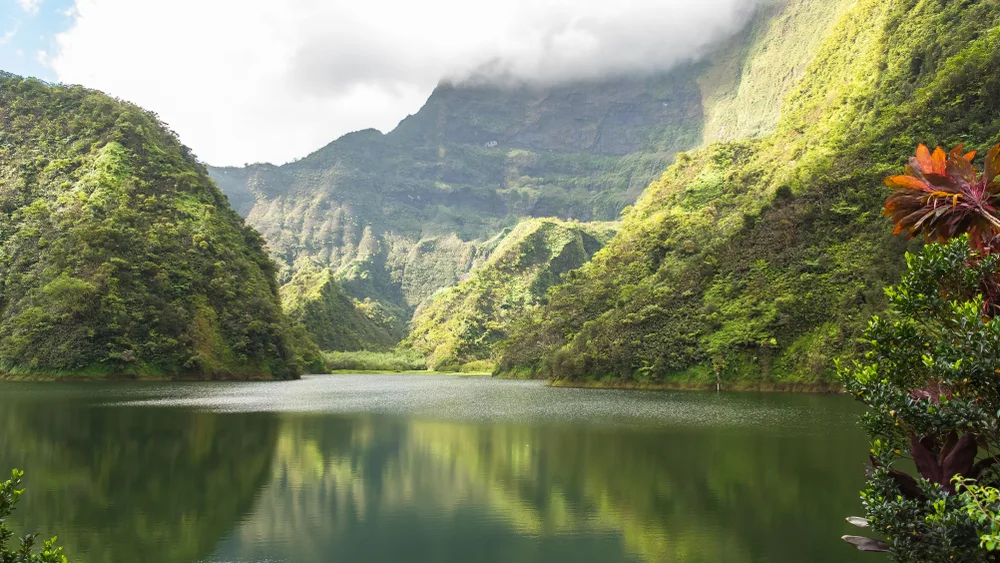
Pascale Gueret/Shutterstock
The worst time to visit French Polynesia is from December to January, as this is a time when the weather isn’t great and when the islands are very busy.
December to January are the Christmas holidays, so many people from nearby Australia and from around the world use their time off to visit.
In addition, many Polynesians working abroad use this time to come home and see their families, so airline prices tend to go up. The weather also isn’t great at this time. December and January are the peak of the rainy season and tend to have the most showers.
Weather during the rainy season is always a bit of a gamble, but you have the highest chances of getting stuck in your hotel room during this month.
Any time you visit during the rainy season, you should be careful of one of the biggest seasonal dangers in French Polynesia—cyclones.
While the islands aren’t as affected by tropical storms as other Polynesian archipelagos, there are occasional cyclones, some with deadly consequences such as Cyclone Oli in 2010. Even if there aren’t cyclones, you may still encounter flooding and heavy rain.
French Polynesia by Month: Climate & Activities
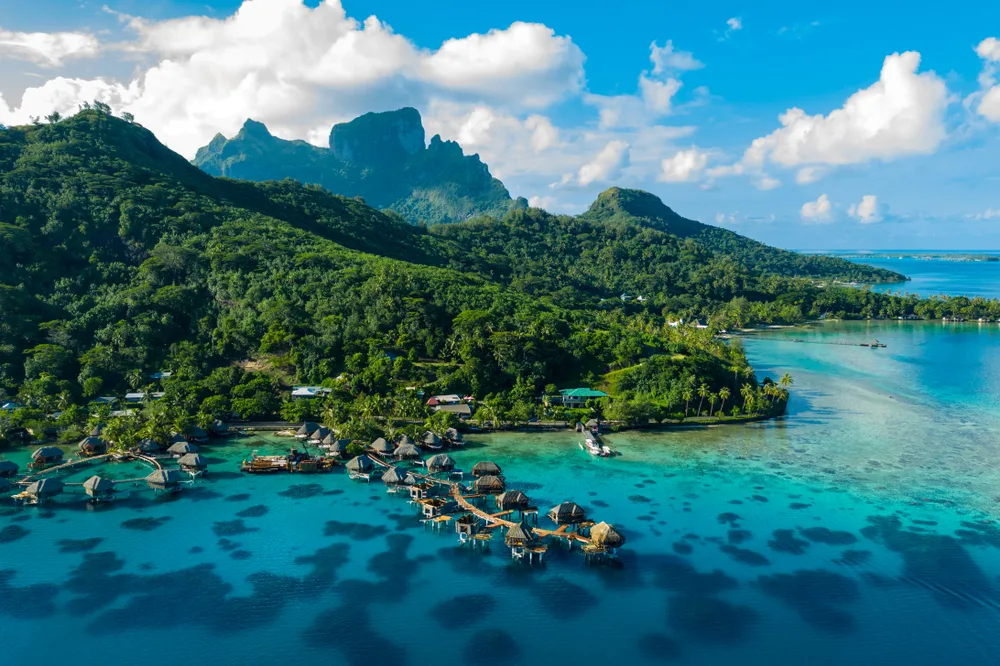
Maridav/Shutterstock
Still unsure about the best time to visit French Polynesia? Take a look at our summary of the weather and climate by month below:
January
January in French Polynesia is warm and rainy, with temperatures typically ranging from 76 to 86°F (24 to 30°C). This month is ideal for exploring the lush landscapes, snorkeling in the crystal-clear lagoons, and experiencing the vibrant Heiva I Tahiti festival in Papeete, showcasing traditional Polynesian dance and music.
February
February continues with warm and humid weather, perfect for relaxing on beautiful beaches like those on Bora Bora, diving in Rangiroa’s lagoon, and visiting the Marquesas Islands to explore unique cultural and archaeological sites.
March
As the wet season continues, temperatures in French Polynesia range from 75 to 86°F (24 to 30°C). March is great for exploring the underwater world, visiting the Pearl Museum in Tahiti, and taking guided tours of the lush interior of the islands, such as Moorea’s pineapple plantations.
April
April marks the transition to slightly cooler and less rainy weather, with temperatures around 75 to 85°F (24 to 29°C). It’s an ideal time for sailing and island hopping, exploring the vanilla plantations in Taha’a, and enjoying outdoor Polynesian spa treatments.
May
May sees the start of the cooler and drier season, with temperatures from 72 to 84°F (22 to 29°C). Explore the ancient temples (marae) on Raiatea, enjoy snorkeling and water sports in the Tuamotus, and experience the colorful local markets in Papeete.
June
Winter arrives with cooler and drier weather, with temperatures between 70 to 82°F (21 to 28°C). June offers opportunities for attending the Art Festival in Tahiti, exploring the lush valleys and waterfalls on the islands, and enjoying the spectacular whale watching season.
July
July maintains cool and dry weather, with temperatures from 69 to 81°F (21 to 27°C). It’s a popular month for celebrating French Polynesia’s autonomy on July 14th with parades and festivities, taking traditional outrigger canoe trips, and diving with manta rays in Bora Bora.
August
Temperatures in August range from 69 to 82°F (21 to 28°C). Visit the black pearl farms in the Gambier Islands, explore the archaeological sites on Hiva Oa, and enjoy the Heiva va’a, a canoe racing festival in Tahiti.
September
As spring begins, temperatures range from 70 to 82°F (21 to 28°C). September is perfect for hiking in the lush mountains of Moorea, enjoying the quieter beaches, and visiting the Robert Wan Pearl Museum in Tahiti.
October
October sees the return of warmer weather, from 72 to 84°F (22 to 29°C). It’s a great month for swimming with dolphins and rays in Moorea, exploring the diverse marine life while scuba diving, and experiencing the Hawaiki Nui Va’a, a long-distance canoe race.
November
The warmer and wetter season begins in November, with temperatures ranging from 73 to 85°F (23 to 30°C). This month is ideal for exploring the cultural heritage of the islands, enjoying the vibrant nightlife in Papeete, and relaxing in overwater bungalows on Bora Bora.
December
Summer brings warm and wet weather, with temperatures ranging from 76 to 87°F (24 to 31°C). December is festive with Christmas and New Year’s celebrations, perfect for enjoying cruises around the islands, exploring the diverse marine ecosystems, and indulging in luxurious spa treatments.
Frequently Asked Questions
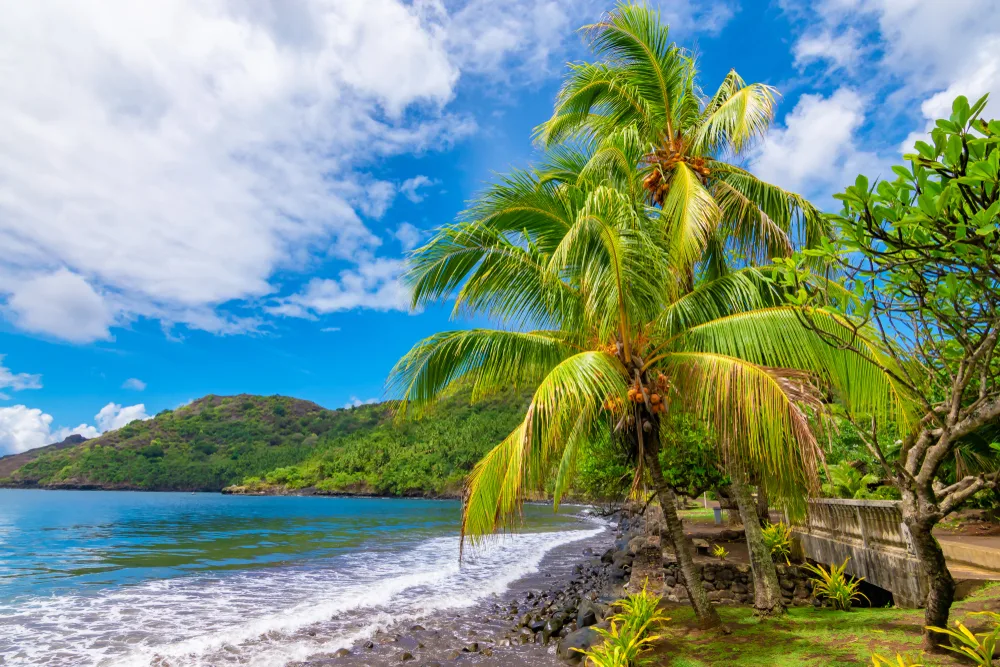
Napa/Shutterstock
Here are a few questions that can help you pick the best time to visit this tropical paradise:
What are the best months to visit French Polynesia?
The best months to visit French Polynesia are June, July, and August thanks to their pleasant weather. The temperatures are hot but not humid, and the days are mostly sunny.
When is the rainy season in French Polynesia?
The rainy season in French Polynesia lasts from November to April. During this time, you can expect near-daily showers.
What are the best months to visit Bora Bora?
The best months to visit Bora Bora are from May to October. This is the island’s dry season, when the weather is perfect for lounging on the beach.
Is there a hurricane season in French Polynesia?
French Polynesia isn’t really affected by hurricanes. However, during the rainy season which lasts from November to April, the islands get hit by occasional cyclones.
How many days is enough in French Polynesia?
You should spend at least ten days in French Polynesia. Since getting there is so difficult, you don’t want to turn around and go home right away, plus you should give yourself enough time at the beach.
So, What’s the Best Time to Visit French Polynesia?
The best time to visit French Polynesia is during the peak of the dry season, from June to August. Then, you’ll have the best beach weather, and get to check out the biggest local festivals.
So, with so much to see and do and plenty of amazing times to visit, what are you waiting for — book your trip today and experience for yourself all that French Polynesia has to offer. Happy travels!



